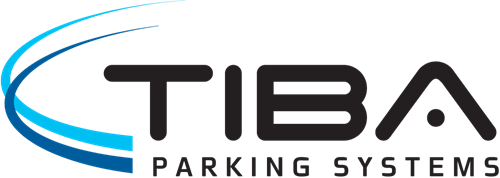Peter Park: Parking Management for Hospitals and Clinics
Parking Management in Hospitals and Clinics Must Accommodate Different User Groups as Well as the Facility’s Budget and Staff. Learn Here How Parking Operators of Healthcare Facilities Can Implement This with Digital Parking Management.

Patients, visitors, employees, long-term parkers - hospital parking areas are used by a large number of different user groups. The administrative effort that has to be managed in addition to the daily operation of the hospital is often correspondingly high. For many operators, this is a major challenge - both in terms of time and finances.
Relevance of effective parking management
Due to high maintenance costs for defective barrier systems and inefficiently used capacities, a hospital's parking lot often represents a major cost factor. Different user groups require smart planning of available capacities so that enough parking space is available for patients, visitors or employees at all times. Following up on parking violations also requires a lot of manpower and time. In addition to the main focus on hospital operations, this is often a major challenge. Operators therefore often want a solution that allows them to centrally manage parking, use it efficiently and make it profitable. To achieve this, digital and fully automated processes are required as part of efficient parking management.
Challenges of parking management in healthcare facilities
Large administrative effort due to different user groups
The users of a hospital parking lot range from visitors to patients to employees. The different user groups also result in different authorizations that must be taken into account in parking space management. While employees and some patients or visitors need a permanent parking space, there must also be enough free spaces available for visitors who only use the parking area for a few hours.
It is not uncommon for healthcare facilities to have to deal with parking violators blocking parking spaces assigned to medical staff. The manual tracking of these represents a high personnel expense, which is in addition to the daily hospital operations and is thus often seen as an annoying evil.
High maintenance costs
Another challenge of a classic barrier system is high acquisition and maintenance costs. Especially in times of tight budgets, a defective barrier often represents a high cost factor. However, repair is essential, otherwise the parking area cannot be used. Detailed information on the challenges of a defective parking barrier can be found in our related blog article.
Time critical situations
It becomes particularly critical when an ambulance arrives to transport an emergency to the facility. A defective barrier or excessively long waiting times due to waiting cars or simply having to stop in front of a functioning barrier can actually be life-threatening for the patient here. In less explosive situations, however, it can still happen that barriers are damaged during the rapid entry of the ambulance. This again results in unscheduled high costs.
Digital parking system for clinics and hospitals
The solution to the above challenges can be a digital parking system such as the one from Peter Park . Classic barriers become superfluous here, as license plates are automatically recorded by cameras when entering the parking area. Thus, the parking process starts without the need to stop in front of a barrier.
At the end of the parking process, payment can be made as usual at a parking machine using a debit/credit card or cell phone. Alternatively, it is possible to drive away from the parking area and automatically handle the parking process and the associated payment via the integration of a partner parking app (for example EasyPark or Parkster). In this case, the capture of the license plate number upon entry and exit is not only used to determine the parking time and end of the parking process, but also to process the payment in the background - making a trip to the parking machine superfluous.
You can read in detail how such a solution can look like for healthcare facilities in our blog article about it.
Advantages of digital parking management for clinics and hospitals
Cost savings
The installation of a digital parking system represents an opportunity not only to modernize the parking area, but also to increase efficiency by automating processes at minimal cost. In addition to low initial costs, the elimination of maintenance costs in particular delivers major savings compared to barrier systems. Regular maintenance and defective barriers are now a thing of the past.
Minimum effort
The previously time-consuming manual tracking of parking violations is now obsolete thanks to automatic, outsourced tracking. This saves time on the one hand and personnel costs on the other. All other processes and work steps are also digitized and thus more efficient. The management of the various user groups, for example, takes place via the central Peter Park dashboard on the computer, tablet or cell phone. This means that different authorizations can be activated with just a few clicks.
Additional revenue potential
By evaluating all relevant data in the Peter Park dashboard, trends in utilization can be identified and revenue forecasts can be made. This means that parking space can be used optimally and resources are not wasted. The flexible pricing models for different requirements result in additional revenue potential. This transforms parking space from a cost factor into a profitable source of revenue.
Satisfied patients
In addition to numerous advantages for the operators of the parking area, a digital parking system is also a convenient solution for users or patients. The entry and exit of the area can happen quickly without annoying waiting in front of a closed barrier. Up to the point of payment, no contact with other people is necessary either, which is particularly advantageous in the context of a healthcare facility.
Thanks to central administration via the Peter Park dashboard, special goodwill can be shown to relatives of emergency patients or elderly persons if the parking time is exceeded. If a long-term stay is planned, individual discounts can be flexibly applied.
Employee satisfaction
The areas intended for hospital employees can be accessed easily and without long queues in the morning or after work. Individual discounts and activations can in turn be made via the central dashboard. All these points ultimately lead to less stress, less administrative work and more efficiency. More details on digital parking permits can be found in a separate blog article.
Data protection
Data protection issues have a very high priority in medical facilities. Both patient and employee data must be treated confidentially and in accordance with current data protection guidelines. All DSGVO guidelines are met by the parking system from Peter Park , as the license plate scanner only captures the license plate without video recording the driver. As soon as the payment is completed, the customer data as well as the image of the license plate with timestamp are deleted from the cloud in a DSGVO-compliant manner.
Conclusion
Switching to a digital parking system offers a wide range of benefits. In addition to reduced administrative effort, the potential for increased profitability is in the foreground. Existing parking space can be managed centrally and used efficiently. For patients, visitors and employees, this means maximum convenience thanks to eliminated waiting times in front of barriers and flexible payment options and conditions.
In our blog article on Klinikum Leipzig, you can find out in more detail how such a project can be successfully implemented in practice.
About Peter Park.png)
Peter Park is a digital parking system that eliminates the need for parking tickets, barriers, and parking discs. Peter Park System GmbH transforms parking lots into mobility hubs by providing parking lot operators and municipalities with automatic license plate recognition and cloud-based management software. The system from Munich was launched in 2019 and is already available in Germany and Austria.




Comments
There are no comments yet for this item
Join the discussion